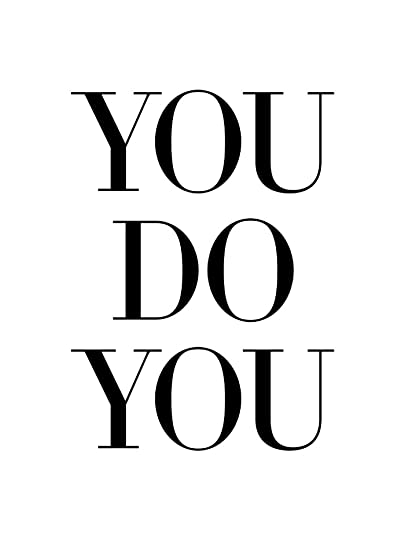We humans have been journaling, writing diaries, or otherwise writing down our thoughts, feelings, and experiences for centuries. It’s a practice that dates back to the ancients. And it’s a tool that’s been used by pilgrims, explorers, soldiers, inventors, entrepreneurs, and artists.
People journal for different reasons. Some people journal to engage in deeper reflection, while others do it to help manage stress or process difficult experiences. Some journal as a way to reinforce their strengths or accomplishments; others focus on gratitude. Many therapists, counselors, and coaches recommend journaling, and many teachers assign it in schools.
Those who journal are in excellent company. People known to have engaged in some form of journaling include: John Quincy Adams, Marcus Aurelius, Lewis Carroll, Winston Churchill, Marie Curie, Charles Darwin, Joan Didion, Thomas Edison, Albert Einstein, Ralph Waldo Emerson, Anne Frank, Benjamin Franklin, Arianna Huffington, Thomas Jefferson, Franz Kafka, Frida Kahlo, Martina Navratilova, Anais Nin, Sylvia Plath, Seneca, Susan Sontag, Leo Tolstoy, Mark Twain, Queen Victoria, Leonardo da Vinci, George Washington, Oscar Wilde, Oprah Winfrey, and Virginia Woolf.
“I hope I will be able to confide everything to you, as I have never been able to confide in anyone,
and I hope you’ll be a great source of comfort and support.”
-Anne Frank’s first entry in her journal, 13th birthday, June 12, 1942

Different Types of Journaling
There are different types of journaling. One common form is “expressive writing.” It involves writing continuously about an issue in our lives, including our deepest thoughts and feelings. According to James Pennebaker and Joshua Smyth, authors of Opening Up by Writing It Down, it can include different variations, including writing about a problem we’re facing, journaling about our worries and concerns, or doing a word association around a certain word (e.g., “stress”).
Another common form is “gratitude journaling”: writing about positive experiences that we’re thankful for.
The Benefits of Journaling
Hundreds of studies over several decades have documented an impressive array of benefits deriving from journaling. For example, it can help us:
- discern the lessons and patterns of our experiences
- understand our experiences and feelings in new ways
- get a clearer sense of our progress over time
- remember the good things we experience, which can otherwise be easy to forget
- become more self-aware
- boost our confidence
- remain more mindful of our thoughts and feelings
Journaling also comes with a large number of mental and physical health benefits. For example, it can help us:
- cope with stressful events
- reduce anxiety
- regulate our emotions and ease our distress when we’re struggling with difficult feelings
- reduce the frequency of intrusive thoughts
- improve our mood
- enhance our psychological wellbeing
- make sense of our personal history, of the events and experiences that have shaped us (1)
- cultivate a greater sense of purpose and meaning
- have a lower risk of depression
According to the research, journaling is associated with lowered blood pressure, better sleep, and fewer stress-related doctor visits and less time spent in the hospital. It’s also associated with improved function of our immune system, lungs, liver, and memory as well as reduced symptoms of chronic diseases. In addition, it can help with recovery from traumatic events, in part because it allows us to process our experiences and emotions.
Journaling can also benefit our brain and cognitive capacity.
“The practice of writing can enhance the brain’s intake, processing, retaining, and retrieving of information… it promotes the brain’s attentive focus … boosts long-term memory, illuminates patterns, gives the brain time for reflection, and when well-guided, is a source of conceptual development and stimulus of the brain’s highest cognition.”
–Judy Willis, board-certified neurologist and teacher
At work, journaling is associated with less work absenteeism and less time out of work following job loss. And at school, it’s associated with higher grades. Journaling can help us address many of the common traps of living, including overthinking, self-doubt, negative self-talk, drifting, settling, and more.
Journaling is not only inexpensive and straightforward to engage in but it also avoids the need for having people there to listen every time we want to get something off our chest. The pages are always there for us, and they never interrupt or misunderstand. As Anne Frank once wrote, “Paper has more patience than people.”
Benefits come not only from journaling itself but also from going back and reviewing what we’ve written some time later. This review process can help us recapture forgotten stories or experiences and see patterns.
Note that there can be downsides of journaling for some people—or of journaling in certain ways. For example, it’s not always a pleasant experience, since it sometimes involves dredging up painful feelings.
How to Journal: Best Practices
When it comes to how we should journal, there’s of course no single formula. Different people will approach journaling in different ways. The key is to find what works for us. Still, here are some tips:
Remember that journaling is for us and us alone, not for an audience. If we’re self-conscious as we write or concerned about judgment from others, it can reduce or eliminate the value of journaling.
Start small. For many, it’s best to begin with only a few minutes on a manageable topic (e.g., a recounting of the day or a single incident).
Try journaling in different ways. Try writing in a bound journal or spiral notebook. Or try using a digital writing app or voice recording app. (Note, though, that writing by hand comes with real benefits that can easily outweigh the slight loss of speed compared to typing or speaking.) Experiment and see what works.
Try different frequencies. There’s a debate about the ideal frequency of journaling. Some people swear by the practice of daily journaling, in part because it builds a healthy habit, while others warn against the monotony that can come from having a regular cadence. In the end, we should find out what works for us and do that.
Find a quiet and peaceful space without interruptions and distractions. Going deep into our thoughts and feelings requires focus and concentration.
Choose a time of day that works best—the time when our thoughts and reflections flow most naturally. Many people swear by morning journaling. Others prefer to wait until they feel inspired or troubled.
Be sure to include both feelings and thoughts. This helps us avoid unhealthy rumination and makes it more likely that we’ll see patterns and themes. Start with expressing feelings first and then move on to thoughts and thinking patterns.
Be forthright in expressing exactly how we feel without any editing or filtering.
“Fill your paper with the breathings of your heart.”
-William Wordsworth, English Romantic poet
Bear in mind that journaling may bring up painful feelings or some anxiety, and that’s okay. Feel free to take a break and come back to it later. Keep in mind the strong potential for long-term benefits if we stick with it.
“Write what disturbs you, what you fear, what you have not been willing to speak about. Be willing to be split open.”
–Natalie Goldberg, writer
Don’t get caught up in written rumination—in rehashing difficult things over and over. That can actually be counterproductive.
“One of the interesting problems of writing too much, especially if you’re going through a difficult a time, is that writing becomes more like rumination and that’s the last thing in the world you need.”
-Dr. James Pennebaker, social psychologist
Feel free to draw in the journal. We don’t have to limit ourselves only to text. But researchers advise against drawing only, as it can lead to worse moods.
Try journaling prompts, especially if we’re not sure where to begin. Examples: things that bring us joy, what we’re feeling or noticing right now, people who or places that make us feel the happiest, dreams we have about the future, or what deserves our best attention now.
“…one thing journaling has taught me is that the mind is a surprising place, and you often don’t know what it may be hiding until you start knocking around in there. In other words: Writing in your journal
is the only way to find out what you should be writing about.”
–Hayley Phelan, “What’s All This About Journaling?” New York Times, October 25, 2018
Journaling for Leaders
Many leaders have noted how journaling has helped them become a better leader and grow as a person. These days, many leaders are time-starved and deluged by inputs and information, so having a simple process that facilitates thinking, reflection, and analysis can be powerful.
Leaders can use journaling to process difficult events, think through important decisions, prepare themselves for upcoming challenges, vent their frustrations, or document their journey and see progress and patterns. And they can use it to reconnect with their inner voice when they’re flooded with outside inputs.
Journaling can help leaders be more mindful and present with their colleagues—and empathetic toward their struggles. It can also help them make better decisions and unearth important insights about vexing situations, including innovative ideas that may otherwise have been lost. Importantly, journaling can serve as a pressure valve that allows leaders to process difficult emotions and release some of the stress and pressure associated with the job. Finally, it can help steel them for tough battles ahead.
“I can shake off everything as I write; my sorrows disappear, my courage is reborn.”
-Anne Frank
Journaling for Creativity and Innovation
British entrepreneur Richard Branson keeps notebooks full of questions as part of his creative process. Journals can be a great tool for entrepreneurs to capture their ideas about new products and services to launch, based on observing customer problems and spotting market gaps.
Julia Cameron, author of The Artist’s Way: A Spiritual Path to Higher Creativity, advocates a distinct form of journaling as a way to recover our creativity and reconnect with our own inner spiritual guide. With her “morning pages,” as she calls them, she advocates writing three pages of strictly stream-of-consciousness, longhand writing every morning—simply writing down whatever comes to mind, jumping from topic to topic, no matter how banal or bizarre—until the three pages are filled. She explains:
“Nothing is too petty, too silly, too stupid, or too weird to be included… Nobody is allowed to read your morning pages except you…. Morning pages are nonnegotiable. Never skip or skimp on morning pages. Your mood doesn’t matter…. If you can’t think of anything to write, then write, ‘I can’t think of anything to write.’”
Conclusion
With our busy lives and frenetic work schedules, journaling can be a great way to slow down and reflect, reawakening a rich inner life. There’s a reason so many different types of people have been doing it through the ages.
“How noble and good everyone could be if, at the end of each day, they were to review their own behavior and weigh up the rights and wrongs. They would automatically try to do better at the start of each new day and, after a while, would certainly accomplish a great deal. Everyone is welcome to this prescription; it costs nothing and is definitely useful.”
-Anne Frank, The Diary of a Young Girl
Reflection Questions
- Are you using journaling as a practice for personal development, emotional expression, gratitude, creativity, or leadership?
- If you’ve tried journaling before but not kept up with it, will you give it another try using some of the tips above?
Tools for You
- Traps Test (Common Traps of Living) to help you identify what’s getting in the way of your happiness and quality of life
- Quality of Life Assessment to help you discover your strongest areas and the areas that need work and then act accordingly
- Personal Values Exercise to help you clarify what’s most important to you
Related Articles
- “Why Self-Awareness Is So Important—And How to Develop It”
- “The Problem with Neglecting Our Inner Life”
- “What to Do About Overthinking, Rumination, and Worrying”
- “Why Monkey Mind Is Worse than You Think”
- “The Powerful Practice of Acceptance”
- “The Trap of Not Being Grateful for What We Have”
- “The Incredible Grounding Power of Self-Acceptance”
- “The Trap of Self-Doubt—And How to Overcome It”
- “Guard Your Heart”
- “On Spirituality and the Good Life“
Postscript: Inspirations on Journaling
- “Keep a notebook. Travel with it, eat with it, sleep with it. Slap into it every stray thought that flutters up into your brain.” -Jack London, novelist, journalist, and activist
- “Start writing, no matter what. The water does not flow until the faucet is turned on.” -Louis L’Amour, American novelist and short story writer
- “Write hard and clear about what hurts.” -Ernest Hemingway, American novelist, short-story writer, and journalist
- “Writing is medicine. It is an appropriate antidote to injury. It is an appropriate companion for any difficult change.” -Julia Cameron, American teacher, author, and artist
- “Listen. The more faithfully you listen to the voice within you, the better you will hear what is sounding outside.” -Dag Hammarskjöld, Swedish economist and diplomat
Resources on Journaling
- Nancy J. Adler, Leadership Insight Journal
- Julia Cameron, The Artist’s Way: A Spiritual Path to Higher Creativity
- Hal Elrod, The Miracle Morning Journal
- Anne Frank, The Diary of a Young Girl
- Ryan Holiday, The Daily Stoic Journal
- James Pennebaker and Joshua Smyth, Opening Up by Writing It Down: How Expressive Writing Improves Health and Eases Emotional Pain
- Five Minute Journal (app)
Appendix: Why Does Journaling Work?
Based on a large body of research over time, we know that journaling comes with many benefits. It’s less clear, though, why that’s the case. Here are some of the most likely reasons why it’s so beneficial for so many. Journaling:
- helps us get distance from painful or confusing experiences, seeing them in a fresh light without the pressures of the moment
- can facilitate emotional release of unconscious conflicts
- helps us avoid the problem of stuffing our emotions down (it’s healthy to acknowledge, express, and label our feelings about difficult events)
- facilitates the process of mentally organizing our experiences, allowing us to examine root causes and formulate a coherent story
- helps us uncover new insights about ourselves and the way we’re suffering or experiencing the world
- can lower our emotional inhibition
- gives us a heightened sense of control over our emotions and our lives
- involves a powerful combination of both recording and processing, of both remembering and reflecting
- can provide a sense of emotional catharsis
(1) Northwestern University psychologist Dan McAdams notes the importance of “narrative identity,” an internalized story we create about ourselves. It helps us form a coherent story of our lives, which in turn can help us view our lives more holistically and positively.
++++++++++++++++++++++++++++++
Gregg Vanourek is a writer, teacher, TEDx speaker, and coach on personal development and leadership. He is co-author of three books, including LIFE Entrepreneurs: Ordinary People Creating Extraordinary Lives (a manifesto for integrating our life and work with purpose, passion, and contribution) and Triple Crown Leadership: Building Excellent, Ethical, and Enduring Organizations (a winner of the International Book Awards). Check out his Best Articles or get his monthly newsletter. If you found value in this article, please forward it to a friend. Every little bit helps!























